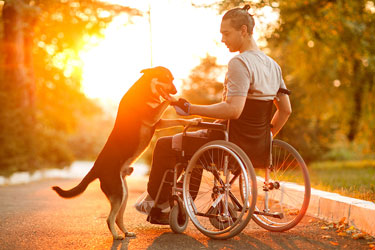Disability Care Allowance, a non-contributory benefit in the In home care services Melbourne, is currently payable to anyone who takes care of a disabled person for more that 35 hours per week. Invalid allowance was introduced in 1976. Women were not eligible. Women who had given up their right of claiming maternity benefits could only claim the carer’s allowance. The concept was expanded to include paternity or adoption benefits. It also remains a contributory incentive for those who provide care for someone who is in need of personal or medical assistance. At the moment, most people who apply for disability care allowance claim income support. This includes both social security and disability benefits.
Disability Care Allowance – The Different Types of Allowances
To ensure you have adequate support in personal care, you can claim disability care allowance. This can be any form of care that you require to ensure your safety and well being. The Disabled Person’s Allowance is primarily for people who cannot look after themselves on their own. To receive benefit, you don’t have to be physically disabled.
Disability Care Allowance – The Different Types of Allowances
There are two types if allowances: one is the personal disabilities allowance and the other is domiciliary nursing benefit. The domiciliary nursing care benefit covers expenses for professional health care provided by trained and registered nurses. Personal disability allowance includes costs such as physiotherapy or occupational therapy. These are all medical treatments which can help improve your quality of living. To be eligible for this allowance, you must have a valid National Insurance ID.
Disability Care Allowance – The Different Types of Allowances
One of the many benefits of the personal car allowance is the ability to get assistance with personal care. You must meet certain criteria. You must be unable or unable to do any regular activity to be eligible. When you apply for the allowance, you will need to include information such as details about your medical condition and how severe. You will then be assessed along with other applicants to see if you meet the eligibility criteria.

You can also get the personal care allowance for disabled people through the home maintenance grant program. This program is for individuals who need assistance with basic tasks like dressing, bathing, and driving. You can get up to half off the cost for personal care. This scheme was introduced as a replacement for the national disability insurance scheme.
Mobility assistance allowance is also available. This allowance is for those who are unable or unable to climb stairs or walk more than 200m. This will depend on the severity of your impairment. If you have a severe enough physical impairment, then you can get a wheel chair. You can only receive one thousand dollars per monthly under this scheme. You should consider the possibility that you could be eligible for additional disability benefits.
There are also additional benefits that you can get if you become a qualified aids or equipment buyer. You can still get the disability carers allowance even if you don’t have the financial means to buy equipment or devices that could improve your quality-of-life. This is available to those who have severe disabilities and cannot live on their own. The cost of this scheme is two-third less than the personal care allowance and one-half the rate of benefit entitlement of the disability support Allowance.
You can also apply for an extra supplement to your existing personal assistance allowance. Individuals with severe psychological disabilities may be eligible for an additional supplement to their existing personal care allowance. These include OCD/depression and schizophrenia, OCD/developmental disorder, OCD/depression, seasonal affective disorders, RSD, and any other intellectual impairment that could have a negative effect on your ability to lead a normal life.



